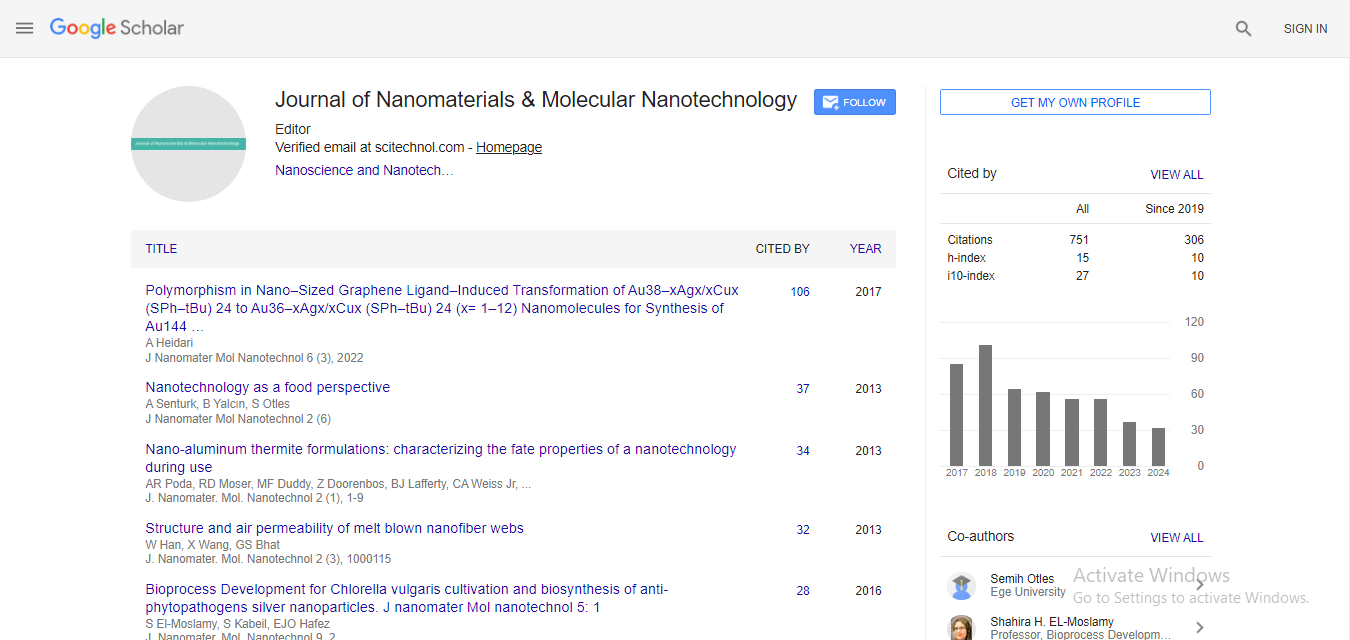Rapid and non-destructive detection of nanoparticle distribution on solid surface via intensity fluctuation of dynamic laser scattering
Panuwat Srisamran
Prince of Songkla University, Thailand
: J Nanomater Mol Nanotechnol
Abstract
In present day, nanotechnology is developed and applied into many scientific and industrial fields, such as, medicine, nanocomposite coating, and optoelectronics. Essentially, the performances of various types of device rely heavily on the detail of nanoparticle distribution on substrate surface, for instance, superhydrophobic coating, quantum dot solarcell, plasmonic device and silicon wafer. In this work, the fluctuation of laser intentisy scatterred from nanoparticles is used for the interpretion of areal distribution of the nanoparticles. A coherent light source was focused on a layer containing ensemble of nanoparticles, generating Mie scattering signal which is collected by an objective lens and subsequently detected by a femtowatt photodiode. Monolayers of silica nanospheres on glass substrates with various particle density, fabricated by electrostatic self-assembly technique, were used in this investigation. The substrate was set in motion with constant velocity using a motorized stage, such that the laser beam was scanned across the entire area. This results in dynamic Mie scattering which fluctuates the scattered light intensity from the nanoparticles on the moving surface. The pattern of the fluctuating signal depends strongly on spatial distribution of the silica particles and the velocity of the motion. To analyze the signal, autocorrelation function was implemented to determine time correlation of the scattered light intensity. Together with the single scattering approximation and the particle velocity information, the mean spacing distance between individual nanoparticles can be retrieved in short period of time.
Biography
Email: panuwat.pu.s@gmail.com
 Spanish
Spanish  Chinese
Chinese  Russian
Russian  German
German  French
French  Japanese
Japanese  Portuguese
Portuguese  Hindi
Hindi 



